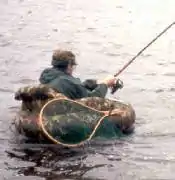Fishing bait
Fishing bait is any substance used to attract and catch fish, e.g. on the end of a fishing hook, or inside a fish trap. Traditionally, nightcrawlers, insects, worms and smaller bait fish have been used for this purpose. Fishermen have also begun using plastic bait and more recently, electronic lures to attract fish.
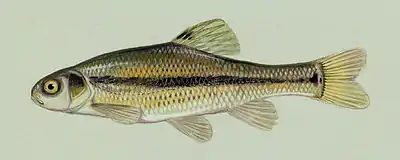
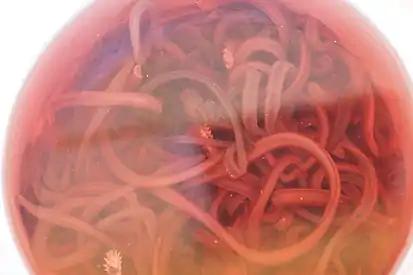
Studies show that natural baits like croaker and shrimp are more recognized by the fish and are more readily accepted.[1] Which of the various techniques a fisher may choose is dictated mainly by the target species and by its habitat. Bait can be separated into two main categories: artificial baits and natural baits.
Artificial baits
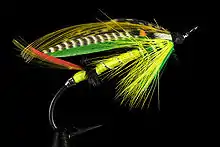
Using lures is a popular method for catching predatory fish. Lures are artificial baits designed to resemble the appearance and movement of prey, usually small fish. The lure may require a specialised presentation to impart an enticing action as, for example, in fly fishing. A common way to fish a soft plastic worm is the Texas rig.
Natural baits
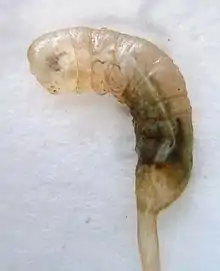
.jpg.webp)
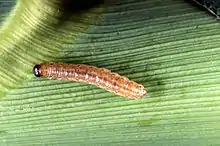

The natural bait angler, with few exceptions, will use a common prey species of the fish as an attractant. The natural bait used may be alive or dead. Common natural baits include worms, leeches (notably bait-leech Nephelopsis obscura), minnows, frogs, salamanders, and insects. Natural baits are effective due to the lifelike texture, odour and colour of the bait presented. Cheese has been known to be a very successful bait due to its strong smell and light colours.
Worms
The common earthworm is a universal bait for freshwater angling. Grubs, maggots, grasshoppers, bees, and ants are used as bait in trout fishing, although many anglers believe that roe is superior to any other bait. In southern climates, lake fish such as bream respond to bite-sized bread bait.
Most common earthworm species, such as Lumbricus terrestris, which can be dug up in the garden, are eminently suitable for freshwater fishing. However, they do not make good candidates for worm farming, as they are deep burrowing (anecic) and do not readily breed in shallow bins. Red compost worms, such as the red wiggler or the European nightcrawler, make better farming candidates, as they are epigeic (surface-dwelling) detritivores. The European nightcrawler is much sought after because it tolerates near freezing temperatures and is one of the few earthworms suitable for saltwater fishing.[2]
Spreading disease
The capture, transportation and the culture of bait fish can spread damaging organisms between ecosystems, endangering them. In 2007, several American states enacted regulations designed to slow the spread of fish diseases, including viral hemorrhagic septicemia, by bait fish.[3] Because of the risk of transmitting Myxobolus cerebralis (whirling disease), trout and salmon should not be used as bait.
Anglers may increase the possibility of contamination by emptying bait buckets into fishing venues and collecting or using bait improperly. The transportation of fish from one location to another can break the law and cause the introduction of fish alien to the ecosystem.
Gallery
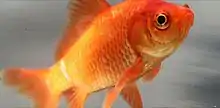
 A bait fish (weather loach)
A bait fish (weather loach)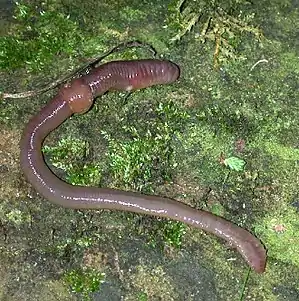
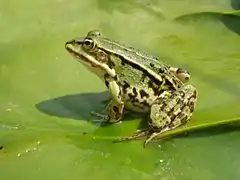
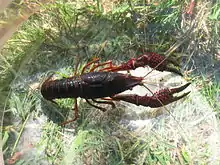 Crayfish are commonly sold and used as bait, either live or with only the tail meat, and are good at attracting channel catfish, largemouth bass, pike and muskellunge.
Crayfish are commonly sold and used as bait, either live or with only the tail meat, and are good at attracting channel catfish, largemouth bass, pike and muskellunge.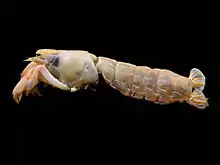
.jpg.webp)
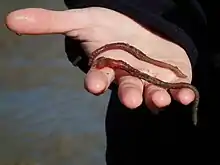
See also
References
- Gunnar Miesen; Steve Hague; Steve Hauge (2004). Live Bait Fishing: Including Doughbait & Scent. Creative Publishing. ISBN 1-58923-146-5.
- Working-Worms: About the Worms
- DNR Fishing Regulation Changes Reflect Disease Management Concerns with VHS
